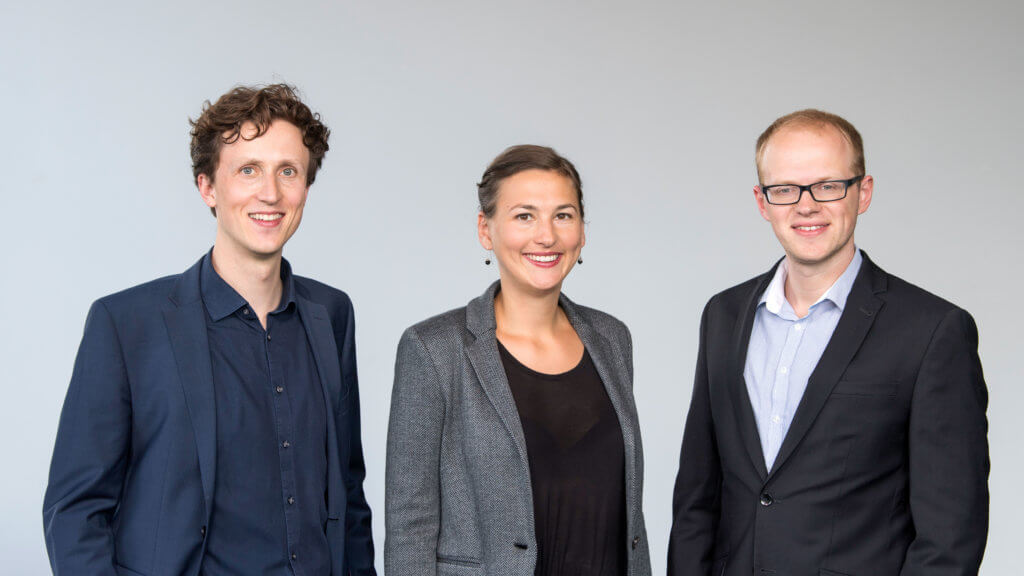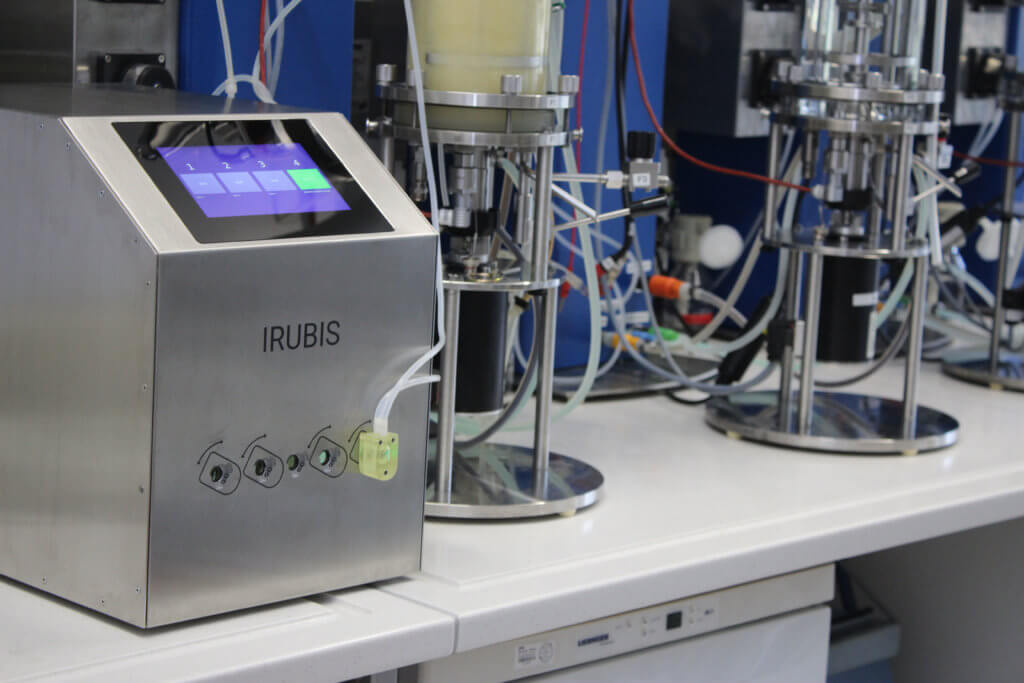How bioreactors can be continuously monitored and regulated
Judith Hillen
Every day, even at weekends, the glucose concentration in bioreactors must be measured and adjusted by hand. With the solution provided by the Munich-based startup IRUBIS , biopharmaceutical companies can save themselves this work. Based on ATR infrared spectroscopy, the startup, which is part of the 5-HT network, has developed an application that enables the continuous monitoring and regulation of glucose and lactate concentrations in bioreactors. In an interview with 5-HT, CEO and co-founder Alexander Geißler explains how companies can use this technology to improve product quality and increase yields in a simple and cost-effective way.
 IRUBIS founding team (from left to right) Lorenz Sykora, Anja Müller, Alexander Geißler
IRUBIS founding team (from left to right) Lorenz Sykora, Anja Müller, Alexander GeißlerWhat problems in biopharmaceutical production does IRUBIS address?
We facilitate the monitoring of bioreactors in which biopharmaceuticals such as insulin, complex antibodies or vaccines are produced. It is important for the cells floating in the culture medium that nutrients such as glucose, for example, are present in a constant concentration. If the glucose concentration remains constant, the cells produce larger quantities of the desired substances in better quality. Currently, the glucose concentration in bioreactors is manually monitored and regulated in 99 per cent of cases. Day after day, the laboratory staff have to take samples and, if necessary, manually control the addition of glucose. This is not only very time-consuming, but also involves a certain risk of contamination.
How does IRUBIS facilitate the monitoring of bioreactors?
Based on ATR infrared spectroscopy, we have developed a solution for automated monitoring and regulation of the glucose concentration in a bioreactor. This saves the manual effort in the laboratory. Because the cells are always optimally supplied, our system also improves product quality and increases the yield. Our device is basically compatible with all bioreactor sizes and types. Currently, we can measure the two most important parameters, glucose and lactate. However, we are working on being able to measure glutamine, glutamate and ammonium soon.
 IRUBIS product
IRUBIS productWhat technology is behind it?
We use ATR infrared spectroscopy as a method: Based on the intensity of the reflected infrared light rays we can identify which components are contained in a sample. This requires an ATR crystal to which the sample is applied and onto which the infrared light is then directed. This crystal or sample carrier must have special optical properties. Until now, diamond has been used for this purpose in most cases - but we have developed an innovative ATR crystal made of silicon, which costs only a fraction of that. This makes our technology very cost-effective and thus also single-use capable.
How did it come to the foundation of IRUBIS?
My co-founder Lorenz and I got to know each other during our studies at the TU Munich in an interdisciplinary business plan seminar. He studied physics, I studied technical business administration. As part of his master's thesis, Lorenz developed a silicon sample carrier, which he wanted to commercialize. At that time I was already working at another TUM spin-off, but I was also keen to start my own company. So we joined forces, applied for the EXIST startup grant and also found our third co-founder Anja, who had written her master's thesis in the field of infrared spectroscopy at the TU Berlin. We started to sell our ATR crystals to research, but after a while we wanted to develop a new application for it. Feedback from research and industry led us to the conclusion that it would be interesting to monitor bioreactors using our technology. Some companies already showed clear interest in our first prototype. For us, this was a sign that we were solving a real problem from practice with our application.
What are the next goals for IRUBIS?
Now - two and a half years after its foundation - we are in the fourth iteration of our prototype, which is currently being tested extensively by several biopharmaceutical companies in southern Germany. We hope to launch our product at the end of this year. The last big milestone we have reached was winning the EIC Accelerator programme, which will support us with 1.3 million euros over the next 18 months to bring it to market. Above all, we are currently in the process of expanding our team from approximately 7 to 13 full-time positions and are therefore looking to strengthen our technical sales and development teams.
How did you hear about 5-HT and what is your impression of our network?
A mentor from the 5-HT network, whom we know through a support programme, established the contact in order to use the synergies between us and the Rhine-Neckar region. This area is of great importance to us, because many potential customers are located here who do research and production in our field. It is also valuable for us that 5-HT has many relevant partners beyond this region. In the case of networks, the added value is often not immediately apparent, but over time. Therefore, it is very important for us to maintain and continuously expand our networks such as the membership in 5-HT.
5-HT Chemistry & Health Newsletter
Want the latest tech and industry news, events, relevant info from the ecosystem and more?
Subscribe to 5-HT Newsletter now Subscribe to 5-HT Newsletter now
Become part of the 5-HT Chemistry & Health
Exchange ideas with innovative startups and future-oriented companies in our ecosystem. We look forward to meeting you!